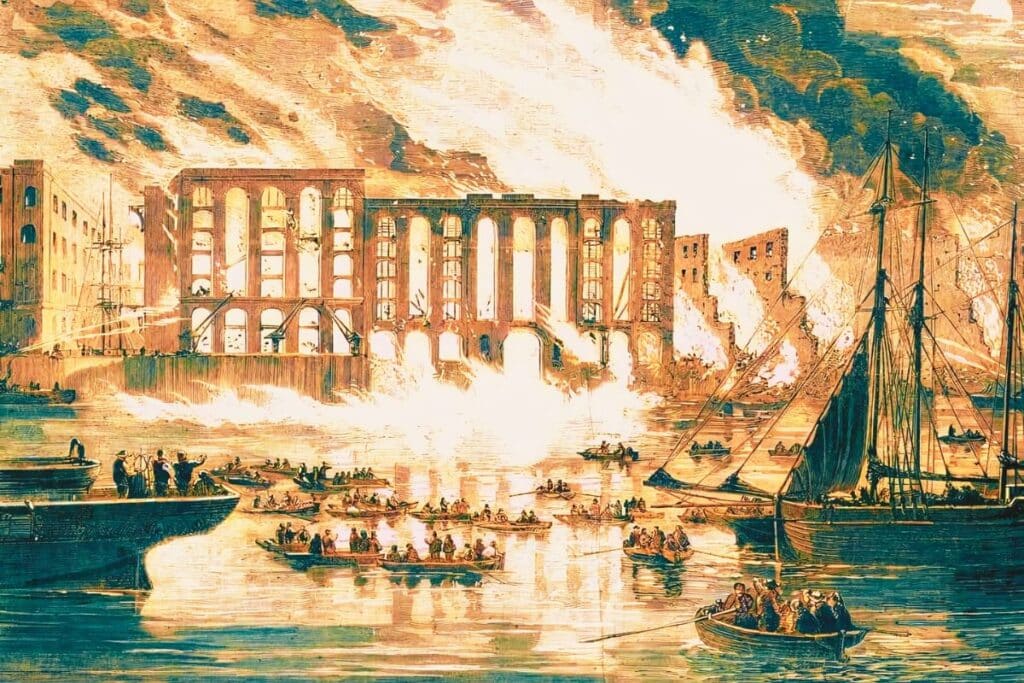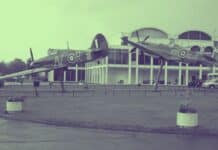Before the infamous 1666 blaze, London’s Southwark faced its own fiery apocalypse in 1212, leaving the city in ruins and sparking urgent reforms in fire safety and urban planning, writes RICHARD CLEMENTS

When people hear about the Great Fire of London, their minds typically drift to the catastrophic blaze of 1666, which devastated large parts of the city.
However, London’s history with devastating fires did not begin in the 17th century. A lesser-known yet equally catastrophic event occurred in 1212, often referred to as the Great Fire of Southwark.
This earlier fire wreaked havoc on the southern part of the city, specifically the borough of Southwark, and left a lasting impact on London’s development and fire safety practices.
In 1212, London was a bustling medieval city, already a significant hub of commerce and population. The city was characterised by narrow streets and closely packed wooden buildings, making it highly susceptible to fires.
Southwark, on the south bank of the River Thames, was a vital part of London, serving as a gateway to the city for travellers from the south. It was also known for its vibrant community, filled with inns, markets, and residential buildings, all constructed primarily from timber.
The Outbreak of the Great Fire of Southwark in 1212
The exact cause of the Great Fire of Southwark remains unclear, but it is believed to have started in Southwark, either accidentally or possibly due to arson.
On a hot summer day in July 1212, flames rapidly engulfed the wooden structures, aided by strong winds that carried embers across the densely built area. The fire spread quickly, consuming homes, businesses, and churches.
One of the most tragic aspects of the fire was its impact on London Bridge, which at the time was a critical crossing point over the Thames. The bridge was crowded with people fleeing the fire, as well as those attempting to assist in the rescue efforts. Unfortunately, the flames reached the bridge, trapping many people and resulting in a significant loss of life.
Contemporary accounts suggest that the fire caused immense destruction. Estimates of the death toll vary, but it is believed that several thousand people perished, either in the blaze itself or in the chaos that ensued. The fire not only destroyed Southwark but also spread to parts of the northern bank of the Thames, further compounding the disaster.
King John himself rushed troops from nearby Windsor to help combat the blaze and prevent looting, but they arrived too late. The king ordered emergency shelters built and grain stockpiles opened to feed the displaced refugees. Still, the city would take years to recover from the catastrophic losses.
In addition to the human cost, the fire had a substantial economic impact. Many of Southwark’s businesses and homes were lost, leading to significant financial losses for the city’s inhabitants. The destruction of London Bridge also disrupted trade and travel, as the bridge was a crucial link between London and the southern regions of England.
In the aftermath of the fire, the city faced the daunting task of rebuilding. The authorities took several steps to prevent such a disaster from recurring. One of the immediate measures was the reconstruction of London Bridge, this time with improved fire-resistant materials. The new bridge featured stone arches, which were less susceptible to fire compared to the previous wooden structure.
Moreover, the fire led to increased awareness about fire safety in London. Regulations were gradually introduced to improve building standards, such as the use of more fire-resistant materials and the widening of streets to act as firebreaks. These early measures laid the groundwork for more comprehensive fire safety regulations in the future.
The Great Fire of Southwark in 1212 had long-lasting effects on London’s urban development and fire management policies. While it was not the last major fire to strike the city, it served as an important lesson in the importance of urban planning and fire prevention.
The disaster also had a profound impact on the community of Southwark. The area, which had been a thriving part of London, faced a lengthy period of recovery. However, Southwark eventually rebuilt and continued to grow, maintaining its significance as a key part of London.
Comparison to the Great Fire of 1666
The Great Fire of 1666 is often remembered as the most significant fire in London’s history due to its scale and the extensive documentation of the event. However, the Great Fire of Southwark in 1212, though lesser-known, was equally devastating in its time.
Both fires highlighted the vulnerabilities of medieval and early modern urban environments and underscored the importance of fire prevention and effective response strategies.
The Great Fire of Southwark in 1212 is a significant yet often overlooked chapter in London’s history. While it may not be as widely recognised as the Great Fire of 1666, its impact on the city’s development and fire safety practices was profound.
Understanding this earlier disaster provides a fuller picture of London’s historical challenges and resilience. As we reflect on these past events, we gain valuable insights into the importance of urban planning and disaster preparedness in safeguarding our cities for the future.
Tell us your thoughts about the Great Fire of Southwark 1212 in the comments below!
RICHARD CLEMENTS has always been fascinated by all things unexplained and unusual, particularly in a historical context. He has a strong interest in the paranormal and supernatural, and he was the founder of Parasearch Radio. Richard also worked alongside Kerry Greenaway and Paul Rook on the paranormal podcast show Paranormal Concept. He is now putting pen to paper, writing articles he believes will interest those who enjoy reading about the lesser-known aspects of the past and the unexplained.








This article impacted me a lot. I live in the Brazilian state of Rio Grande do Sul, in the extreme south of South America, which was devastated throughout last May by state-wide floods. The El Nino phenomenon, associated with the effects of global warming on our rich rainwater network and poor management without catastrophe prevention by the state government and municipal governments, worsened the destruction caused by the flood, thousands of displaced people and climate refugees, deaths, economic impact extremely serious in a state responsible for a large part of Brazil’s agricultural, cultural and export production. Landscapes, families, cities, devastated natural resources. A parallel with his important narrative about the fire of 1212, the vulnerability of urban planning and the difficulties in rebuilding an influential community in its territory, impacting access and services, the need for responsibility and political, social and environmental intelligence. An event in a place is never just about it, it always affects the broad structure around it. Thank you for your text!
Thank you so much for your thoughtful comment. I really appreciate you sharing your personal experience and drawing such a parallel between the Great Fire of Southwark and the recent floods in Rio Grande do Sul. Your insights drive home how important disaster readiness and good urban planning are, both then and now.
I’m sorry to hear about the devastation caused by the floods and the impact on your community. You’re right—events like these have far-reaching effects.
Thanks again for your kind words and for taking the time to share your thoughts.